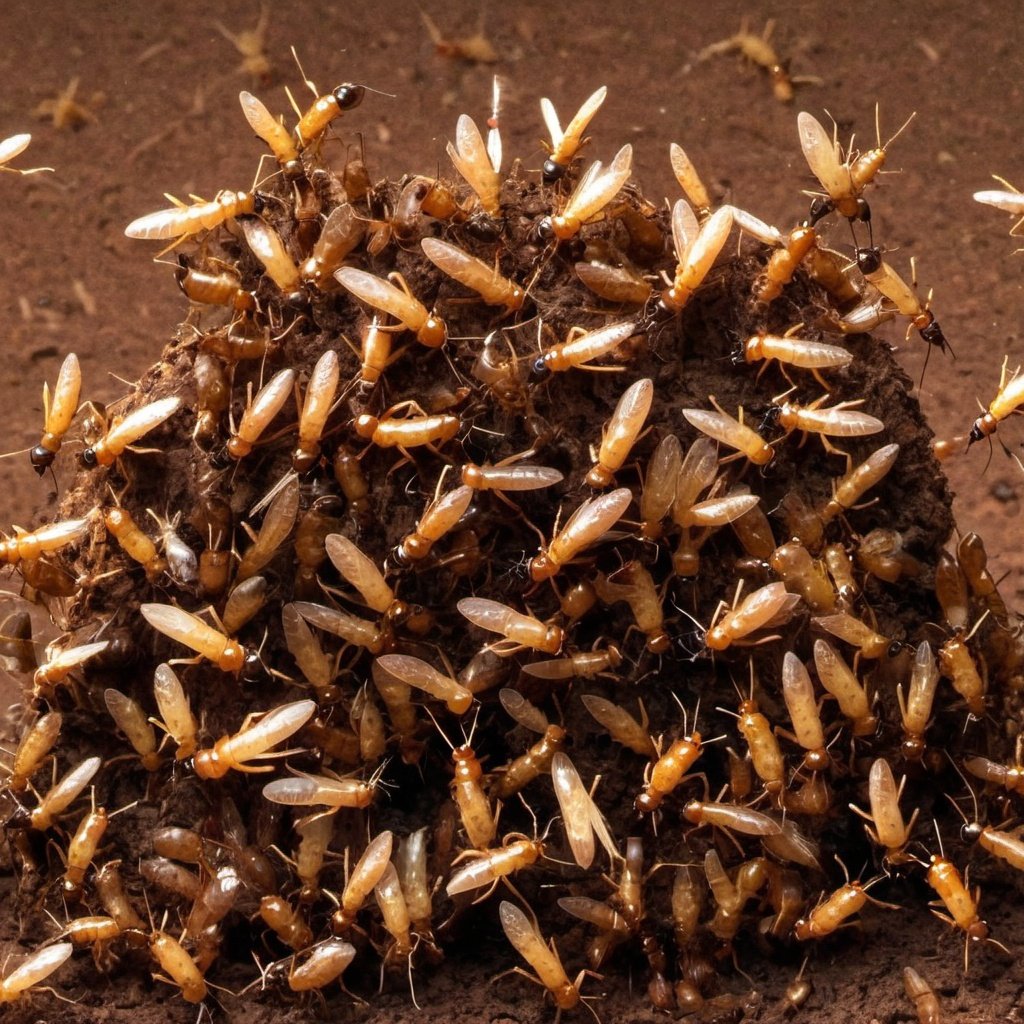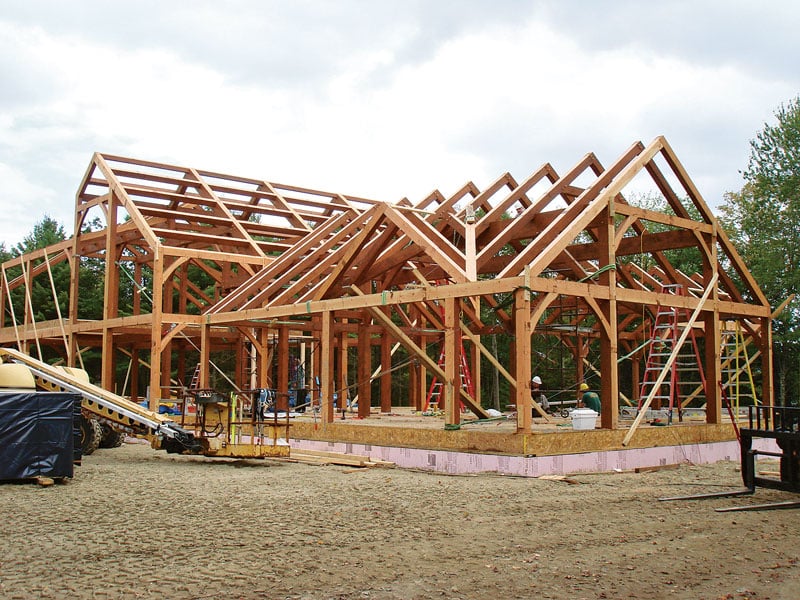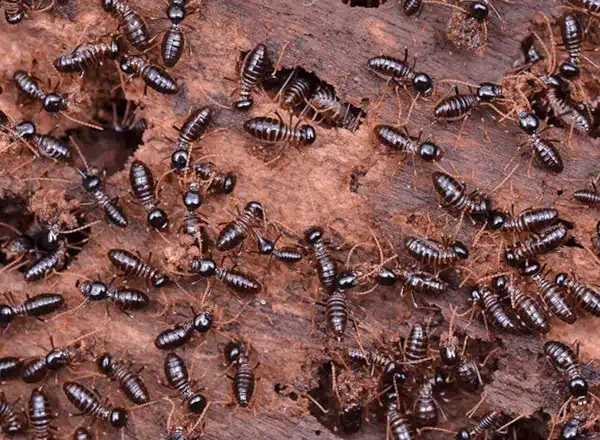Many homes in Oklahoma sit on a powder keg of termite damage. Termites are prevalent in every state in the US except Alaska. In the Tulsa area, the most prevalent termite is the Eastern Subterranean Termite. As its name suggests, it lives almost exclusively underground. Because these insects are hidden, many home owners don’t understand the dangers that they present. Why do termites eat wood? Termites consume the cellulose and lignin found in the cell walls of wood and paper. They have a digestive enzyme in their stomach that turns this into energy.
Termites have a symbiotic relationship with bacteria and protozoa that live in their intestines that break down cellulose into useable fuel for them. These gut bacteria are essential for their survival. Like most insects, termites must molt. They outgrow their exoskeleton as they develop and must shed it. When they do, a portion of their hindgut leaves with the discarded exoskeleton. This leaves their gut biome depleted, so they will eat the droppings of more mature termites to replenish the cellulose eating bacteria in their stomachs. This process is called trophallaxis.
WHERE DO TERMITES LIVE?
As stated before, termites are underground insects. They require a lot of moisture in their environment to survive. If they are above ground too long, they will dry out and die. In order to continue to forage for food above ground, termites will build mud tubes. These tubes carry the humid air from underground up walls and trees, in order that workers can find more food. Your Tulsa pest control company can help.
Out of the entire colony, only two individuals can stay above ground for any length of time. These individuals are called reproductives. In order to reproduce, they must be able to come in contact with reproductives from other colonies in order to reproduce. If the male and female reproductives are successful, they will become king and queen of a new colony.
BIOLOGY OF THE TERMITE
Termites are eusocial insects. They rely on a caste system to divide the labor required by the colony to survive. This system of survival creates huge colonies that can number anywhere to tens of thousands to millions of individuals in any given colony. The bottom caste of the system are the workers. Unlike ants, these workers can be male or female. They are sterile, unless called upon to become reproductives. Workers can continue to molt and become reproductives or soldiers, as the colony requires.
Workers function to forage for food, build the nest and care and feed the young, soldiers and reproductives. The soldiers are protective in nature. They have a large head with either large pincers, or a gland that ejects a defensive fluid. The reproductives, or swarmers, are the only winged individuals, and come in male and female. A good Oklahoma pest control company can meet all of your termite prevention needs.
Soldiers and reproductives emit a pheromone that inhibits the workers from further molting. When the colony becomes low on soldiers or reproductives, the pheromones become low and some of the workers continue to molt to fill those positions. If the colony ends up with too many, the workers will tear apart the extras and feed on them.
REPRODUCTION
Termite colonies reproduce themselves by two methods: swarming and budding. Swarming occurs in late spring, early summer. Winged reproductives, both male and female, fly from the nest looking for other reproductives from other colonies. They will find a swarm of these reproductives from other colonies, and pair up. Finding a good place to build a nest, they will land and lose their wings. They will burrow into the ground and mate. The female queen will begin to lay eggs and the male king will care for them until workers are born and mature enough to care for the young.
Budding occurs if a portion of the colony becomes separated from the main colony. When this happens, reproductives are formed and become the new king and queen. This separated portion becomes a new colony and begins the process again. Budding is also called colony splitting, and often happens with very large colonies.
INSPECTION FOR TERMITES
It is best to contact your Oklahoma exterminator for a professional inspection if you believe that your home is being attacked by termites. But you can do some preliminary checks to see what is happening. Home foundations in Oklahoma fall mostly into two groups: slab foundations and crawl spaces. If you have a slab foundation, you should walk around the outside of your home and look for mud tubes. Also, inside your home, you may see drywall that has been chewed on. Mud tubes often go unseen inside closets and in utility rooms.
Search for high moisture areas. Termites require moisture to survive. If you have a crawl space foundation, and you can safely get under your home, you can also inspect there. In most cases this is not the case, though, and it is time to call a professional. Always use wisdom and put your safety first.
HOW TO GET PROTECTION AGAINST TERMITES
Termite treatments are labor intensive and require large equipment to complete. Because of this, it is best to leave termite treatments to an experienced Tulsa exterminator. Here at TermMax Pest Control, we offer free termite inspections and a wide variety of services to exterminate and protect your home from termites. Liquid treatments, bait station systems and official inspections are all available. We service the entire Tulsa area including Broken Arrow, Bixby, Sand Springs, Pratville, Sapulpa, Owasso, Catoosa, Coweta, Claremore and more. Call us today for a free estimate! We’re here to help!




